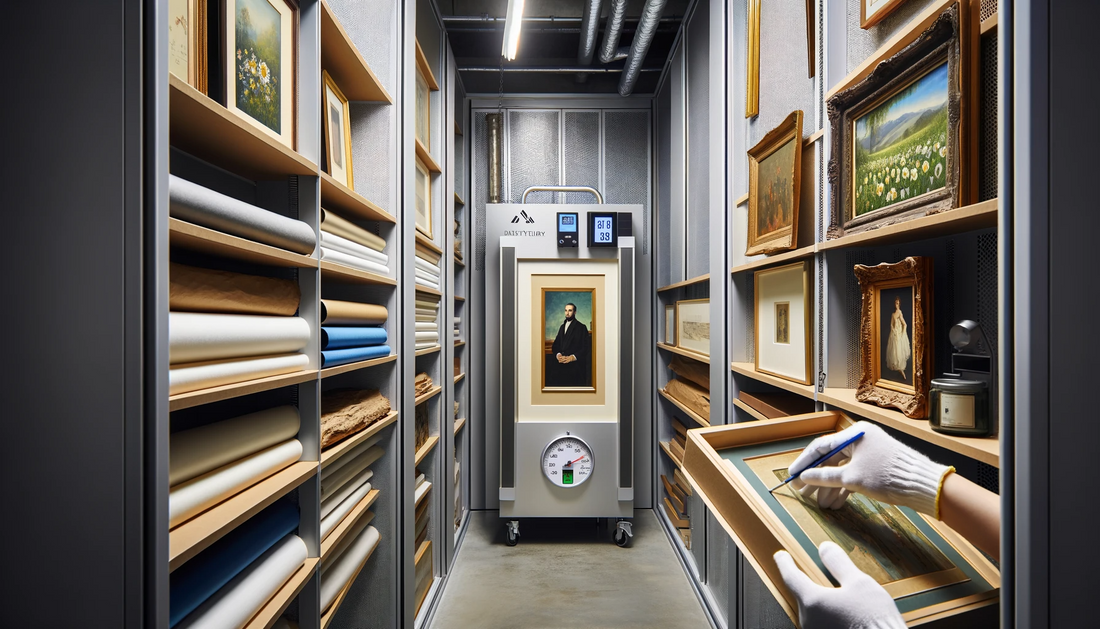Art enthusiasts and collectors understand that artworks are not just valuable investments but also irreplaceable treasures.
To protect and preserve artwork long-term, avoid direct sunlight, maintain 55% humidity, store in cool, dry places, use UV filtering for frames, handle with cotton gloves, and use acid-free materials for storage. Avoid water and direct handling of surfaces.
Proper care and storage are crucial to maintain their beauty and value. This comprehensive guide offers expert tips for effectively preserving your art collection.
Explore our curated selection of contemporary artists from around the globe.
Naturalist Gallery offers artist representation internationally. Apply your art.
1. Understanding Light Exposure and Artwork
- Avoid Direct Sunlight: Prolonged exposure to direct sunlight can degrade paintings due to UV radiation. Oil and acrylics might be more resilient, but they are not immune to light damage. Watercolors and paper artworks are particularly susceptible.
- Ideal Display Locations: Choose locations away from direct sunlight and consider using UV filtering acrylic in frames to protect sensitive artworks.
2. Managing Humidity and Temperature
- Ideal Conditions: Maintain a gallery-like environment at around 55% humidity. Use a hygrometer for accurate measurements and employ air blowers for optimal ventilation.
- Storage Environment: Store artworks in cool, dry, and dark places to minimize risk from temperature fluctuations and moisture.
3. Handling and Cleaning Artworks
- Handling Precautions: Wear cotton gloves to avoid transferring oils and dirt. Handle artworks by the frame and avoid touching the surface.
- Cleaning Techniques: Use a soft duster for paintings and a gentle glass cleaner for glass or acrylic-encased artworks. Avoid using water, soap, or touching the painting surface.
4. Storage Solutions
- Flat Storage for Unframed Art: Place conservation matboard between each piece to prevent damage. Avoid rolling artworks in tubes to prevent creasing.
- Solander Boxes: For small, delicate items, consider acid-free solander boxes, ideal for manuscripts, maps, and small artworks.
- Long-term Storage Tips: Avoid plastic coverings and opt for breathable materials like cotton sheets or non-abrasive polyethylene foam pouches.
5. Special Considerations for Different Mediums
- Canvas, Paper, Wood, Metal: Each medium has unique requirements. Metal and acrylic glass are more resistant to environmental factors, while canvas and wood prefer stable conditions. Paper is the most fragile and needs utmost care.
6. Preventing Physical Damage
- Correct Hanging: Secure artwork properly using appropriate hooks and wires. Avoid hanging in high humidity or heat source areas.
- Dusting Techniques: Use a natural-hair artist's brush for dusting. Avoid stiff brushes, dry cloths, or feather dusters.
7. Additional Protection Measures
- Use of Corner Protectors: When moving or storing framed artworks, use corner protectors to safeguard against impacts.
- Professional Art Restoration: For significant repairs or valuable paintings, consult professional art conservation and restoration services.
Preserving art requires mindfulness and understanding of the unique needs of each piece. By following these expert guidelines, you can ensure that your collection remains in pristine condition, retaining both its aesthetic and monetary value for future generations.
Learn more About Naturalist Gallery of Contemporary Art.
You may also find the following articles helpful:
Form: Understanding Dimensionality
Tone in Art: Understanding Color Value
Line: Types, Techniques, Element of Art
How to Get Your Work in an Art Gallery



